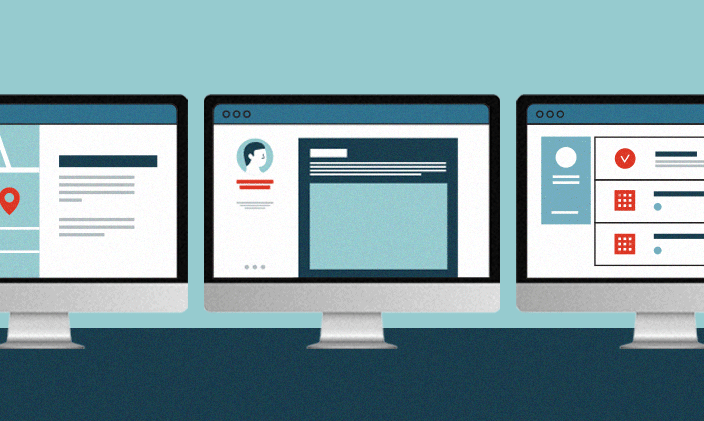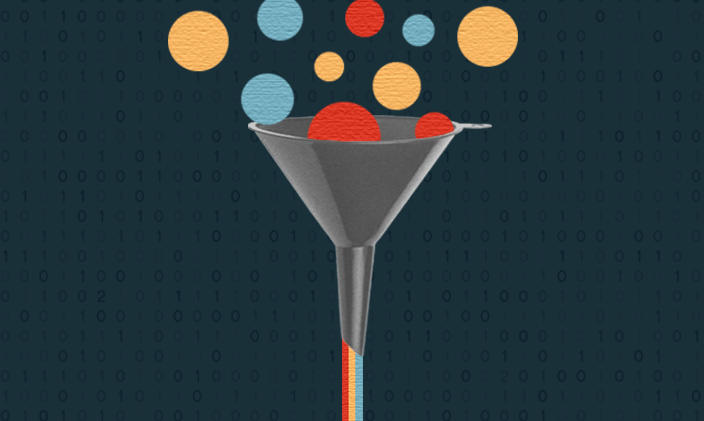Articles > Information Technology > What is a UX designer?
What is a UX designer?

Written by Michael Feder

Reviewed by Kathryn Uhles, MIS, MSP, Dean, College of Business and IT

Every business or service, from a retail shop to a hotel, provides a user experience to customers. However, in today’s digital economy, user experience design (UX design) is synonymous with mobile apps, websites, software, smart devices and other tech products. Here is a closer look.
Why are UX designers important?
UX designers ensure that apps, websites or other products or services are accessible, useful and pleasant to interact with, regardless of each user’s limitations. Because of the increasing reliance on tech products in everyday life, UX design is becoming more important to businesses and organizations.
User experience focuses on each user’s interaction with an organization, business, product or service. According to Usability.gov, “At the core of UX is ensuring that users find value in what you are providing to them.”
What is the difference between a UX and a UI designer?
UX design jobs are different from user interface design (UI) positions, which focus primarily on the interactive and visual aspects of the digital product but don’t consider overall usability. The terms “user experience” design and “user interface” design are often used interchangeably. But, as their distinct job titles suggest, they refer to distinct aspects of the digital product design process that play different roles in creating products or services. Here’s a breakdown of the differences between these two types of designers.
User experience designer
A user experience designer focuses on creating a seamless and meaningful experience for users when they interact with a digital product or service. This involves understanding user needs, conducting UX research, testing usability, and designing digital interfaces that are user-centered and have an intuitive and efficient information architecture. The goal of UX design is to ensure that users have a positive and satisfying interaction with the product.
Key responsibilities include:
- Conducting user research to understand user behaviors, needs and pain points
- Creating user personas and user journey maps to analyze interactions with the product
- Wireframing prototypes to visualize the user flow and functionality
- Testing wireframes and gathering feedback to improve the user experience
- Collaborating with stakeholders, UI designers and web developers to implement the information architecture and final design
User interface designer
A UI designer is responsible for the visual and interactive elements — interaction design — or web design. They focus on creating aesthetically pleasing user interfaces that are easy to navigate and visually appealing. UI designers work on the look and feel of the product, ensuring that it aligns with the brand's visual identity.
Key responsibilities include:
- Designing page layouts, color palettes, fonts and interactive elements
- Creating high-fidelity wireframes and layouts to showcase the final design
- Collaborating with web developers to translate designs into a functional product
- Ensuring consistency in visual elements across the product
- Paying attention to details that contribute to the overall user experience
Key differences include:
- Focus: UX design emphasizes the overall user experience and how users interact with a product, while UI design focuses on the visual appearance and interactive elements.
- Design vs. prototyping: UX designers often create wireframes and prototypes to map out user flows, while UI designers work on finalizing the visual design.
- High level vs. detail: UX design takes a high-level view of the user journey, ensuring a cohesive user experience, while UI design concentrates on individual visual elements and interactions.
UX and UI working together
While UX design and UI design play distinct roles in digital product design, they work closely together to create a comprehensive user experience. UX design provides the framework and functionality, while UI design enhances the visual appeal, usability, and interaction design. Together, they contribute to a user’s journey.
Education and training needed to be a user experience designer
Educational requirements can vary depending on the nature of the role. The U.S. Bureau of Labor Statistics (BLS) classifies web and digital designers together and states that requirements vary from employer to employer. However, consulting firm Nielsen Norman Group surveyed UX professionals and found that 82% had a bachelor’s degree.
General design or technology degrees provide an understanding of the technical aspects of UX. Students interested in in-depth technical knowledge, such as programming methods and languages, can pursue a degree in computer science. The advantage of a four-year tech degree is that it teaches a variety of in-demand technical skills, like software development and web design fundamentals.
Tech or UX design professionals in related fields, like programming, web development or graphic design, can seek opportunities to add to their skill set. Certificate programs, internships, UX design courses, UX boot camps and professional development courses can provide knowledge and skills related to user experience.
Responsibilities of a user experience designer
The day-to-day responsibilities of a user experience designer can vary slightly depending on the industry, office structure and platform type. However, many duties are the same regardless of the setting. These responsibilities may include the following:
- Create sitemaps: User experience designers follow user research to map out the screens and navigation flow for websites, apps or software. Developers and UI designers can use these blueprints as a guide for creating a user-friendly final product.
- Create prototypes: Prototyping is an important part of the UX design process. Developers and designers build a working test product. This prototype allows for testing usability and making changes before final publication.
- Test usability: UX design requires extensive user testing. Designers test the usability of a site or app and get insights from other users.
- Make improvements: After testing, the designer leads the effort to make UX-related improvements to the site. This step in the design process follows the prototyping, testing and debugging procedure before publication of final updates.
- Research competitors: UX experts often look at competitors’ products and assess their usability with the aim of ensuring they are not lagging or missing a trend and are offering content, features or UX design elements to stand out from others.
- Check accessibility: All users need to be able to access the site regardless of limiting factors. UX designers ensure compliance with Web Content Accessibility Guidelines. Due to the Americans with Disabilities Act, some users have grounds for lawsuits if they cannot access a business’s website.
Responsibilities can include other duties, such as writing for UX or commissioning website content, creating reports and communicating suggestions to decision-makers.
Where do UX designers work?
UX designers work in a wide range of settings. Most businesses and organizations rely on the UX of websites, apps and other digital platforms to communicate and interact with customers and users. They help ensure the usability and overall value of these presences.
One of the biggest advantages of a career in UX is the ability to find opportunities in almost any industry. Here are some of the most common examples.
- E-commerce businesses: In e-commerce, they ensure a site, product listings and all connected features, like the shopping cart and payment processing systems, meet customer needs and expectations. This is done by working closely with developers and designers and using analytics to track engagement and sales conversions.
- Corporate websites: Corporations hire UX designers to ensure their websites provide the necessary information and interactivity to clients and customers. In addition to the design and usability of the site, this ensures users can find the information and features they need.
- Embedded systems: UX design isn’t limited to websites and smartphone apps. Embedded systems — such as those used for smart refrigerators, climate controls or home security — require UX expertise. In this setting, designers are responsible for ensuring users have access to the necessary information and can intuitively control their systems via a display panel or phone app.
- Software: They work closely with software engineers and developers to ensure end users are able to operate the products effectively. With constantly updated software-as-a-service platforms becoming common, UX design professionals are becoming even more vital to software companies.
Larger companies, consultants or third-party service providers offer UX design.
Is UX design a good fit?
A career in UX design can be a good fit for those who enjoy user research, user testing, human-computer interaction, information architecture and other web-design tasks that combine creative and technical skills. While visual design abilities are important for UX design pros, they also need to understand accessibility, analyze user research and feedback and grasp the technical requirements of user interface and backend design.
When choosing a career path, students should decide if their skill set matches the job requirements. They should also assess the practical aspects of the job, like growth potential and salary, and measure whether they can realistically complete the necessary education.
Learn more about UX designers
Interested in a career as a UX designer? University of Phoenix can help teach the core skills in software development and web design typically required for this role. While UOPX does not offer a direct career path to becoming a UX designer, it does offer programs that teach graduates how to apply computer science theory to real-world business problems. These include a Bachelor of Science in Computer Science and an Advanced Software Developer Certificate.

ABOUT THE AUTHOR
A graduate of Johns Hopkins University and its Writing Seminars program and winner of the Stephen A. Dixon Literary Prize, Michael Feder brings an eye for detail and a passion for research to every article he writes. His academic and professional background includes experience in marketing, content development, script writing and SEO. Today, he works as a multimedia specialist at University of Phoenix where he covers a variety of topics ranging from healthcare to IT.

ABOUT THE REVIEWER
Currently Dean of the College of Business and Information Technology, Kathryn Uhles has served University of Phoenix in a variety of roles since 2006. Prior to joining University of Phoenix, Kathryn taught fifth grade to underprivileged youth in Phoenix.
This article has been vetted by University of Phoenix's editorial advisory committee.
Read more about our editorial process.
Get your free IT Program Guide
Learn how 100% of our IT degree and certificate programs align with career-relevant skills.
Get your free IT program guide. Please enter your first and last name.
Thank you
Download your pdf guide now. Or access the link in our email.


